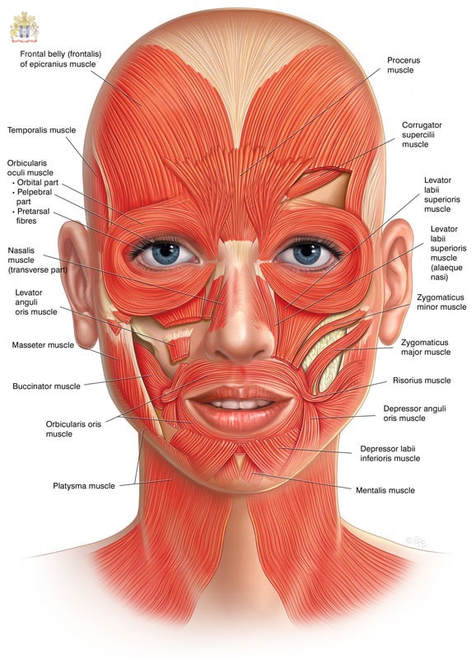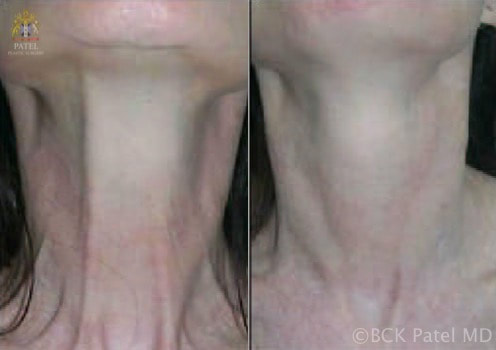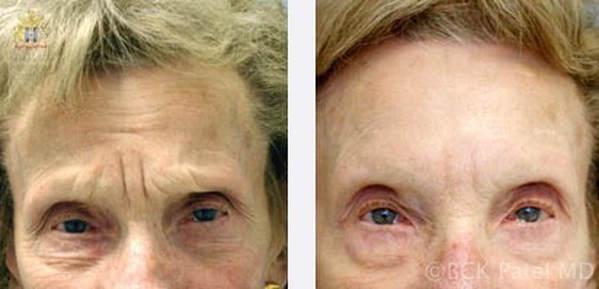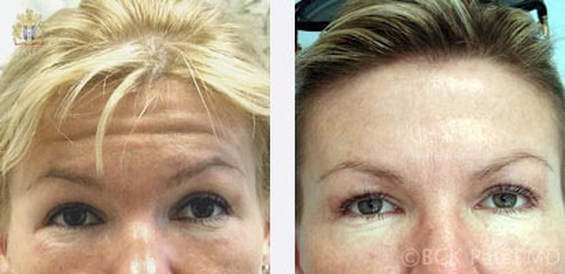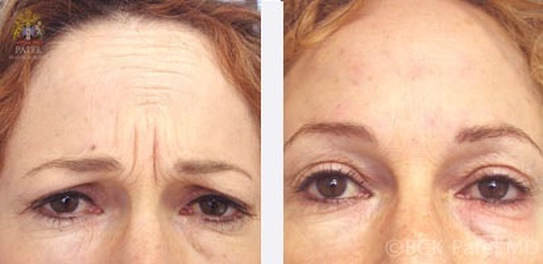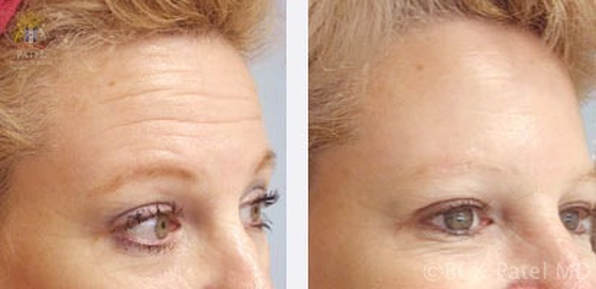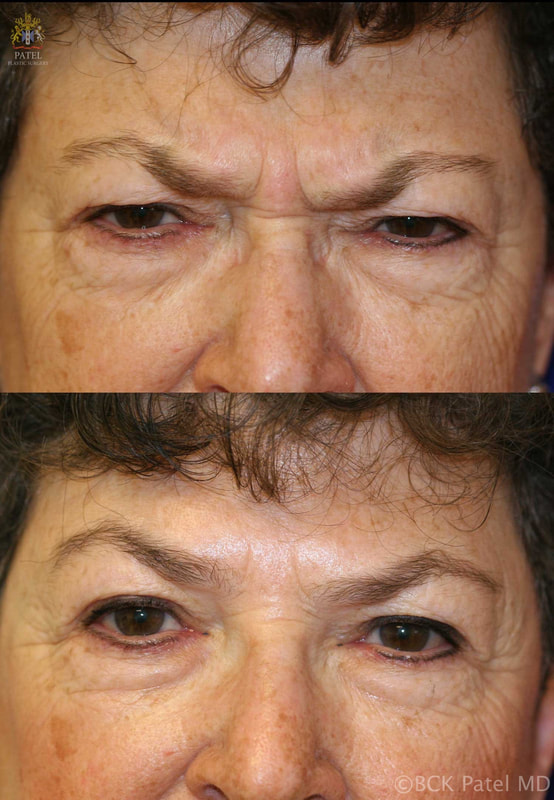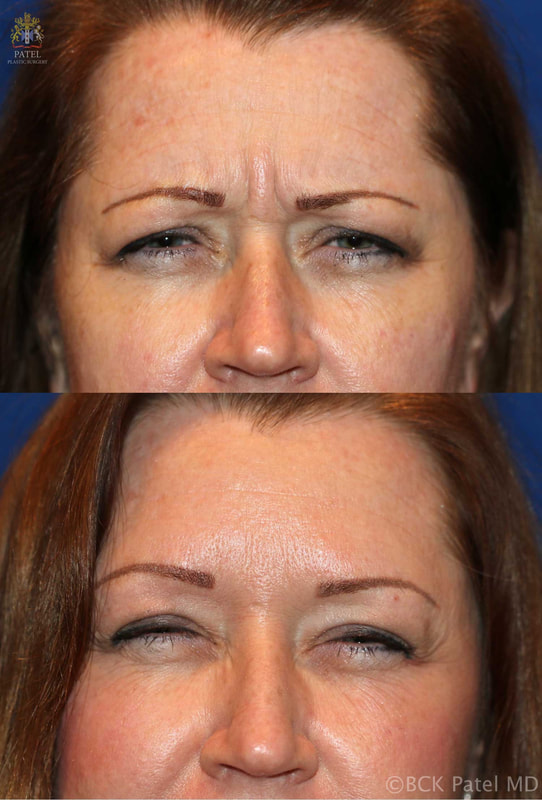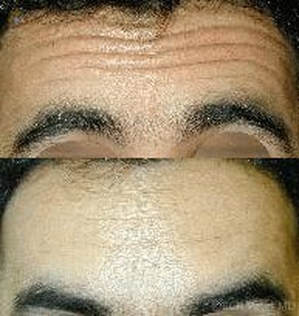Botulinum toxin products come in different forms. They are essentially purified proteins derived from the bacterium Clostridium botulinum.
Botox (onabotulinumtoxinA, Allergan) first earned Food and Drug Administration (FDA) approval in 1989. Dysport (abobotulinumtoxinA, Medicis) was approved in 2009. Xeomin (incobotulinumtoxinA, Merz) was FDA-approved in July 2010 for treatment of adults with cervical dystonia or blepharospasm. Myobloc (RimabotulinumtoxinB) also called botulinum toxin type B.
Botox (onabotulinumtoxinA, Allergan) comes in 100 units per vial (but can also be obtained in 50 unit and 200 unit vials).
Myobloc (RimabotulinumtoxinB) also called botulinum toxin type B comes in 5000 units/ml. Myobloc was approved for the treatment of patients with cervical dystonia.
Xeomin (incobotulinumtoxinA, Merz) comes in 100 units per vial.
Dysport (abobotulinumtoxinA, Medicis) comes in 300 units or 500 units per vial.
- Botox
- Dysport
- Myobloc
- Xeomin
Botox (onabotulinumtoxinA, Allergan) first earned Food and Drug Administration (FDA) approval in 1989. Dysport (abobotulinumtoxinA, Medicis) was approved in 2009. Xeomin (incobotulinumtoxinA, Merz) was FDA-approved in July 2010 for treatment of adults with cervical dystonia or blepharospasm. Myobloc (RimabotulinumtoxinB) also called botulinum toxin type B.
Botox (onabotulinumtoxinA, Allergan) comes in 100 units per vial (but can also be obtained in 50 unit and 200 unit vials).
Myobloc (RimabotulinumtoxinB) also called botulinum toxin type B comes in 5000 units/ml. Myobloc was approved for the treatment of patients with cervical dystonia.
Xeomin (incobotulinumtoxinA, Merz) comes in 100 units per vial.
Dysport (abobotulinumtoxinA, Medicis) comes in 300 units or 500 units per vial.
"Well, the last time I had a picture taken I could hardly see my eyes because of the weight of heavy eyelid. Then I paid attention to how I was actually using my eyes and I really noticed when I was looking at anything especially the computer I was straining my forehead to see better. Since I have had it done I no longer have to lift the forehead and tilt my head to see. It is amazing! I love..." D. Rock 63 Yrs Old with Fat Droopy Eyes - Salt Lake City, UT
What are the contraindications to receiving neuro-toxin injections?
If you have a history of any of the following problems, there may be an absolute or relative contraindication to receiving neuro-toxin injections:
- have a disease that affects your muscles and nerves (such as amyotrophic lateral sclerosis [ALS or Lou Gehrig's disease],
- myasthenia gravis or Lambert-Eaton syndrome)
- have had any side effect from any other botulinum toxin in the past
- have a breathing problem such as asthma or emphysema
- have a history of swallowing problems or inhaling food or fluid into your lungs (aspiration)
- have bleeding problems
- have drooping eyelids
- have plans to have surgery
- have had surgery on your face
- are pregnant or plan to become pregnant. It is not known if XEOMIN® can harm your unborn baby.
- are breastfeeding or plan to breastfeed.
Can I have the same dose of Botox or Dysport or Myobloc or Xeomin?
This is the commonest cause of confusion, not just among patients but also practitioners. A common mistake is to just use a formula to convert the number of units of a particular product into another. For example, a commonly circulated number is X3 for the number of units of Dysport needed to be equivalent to the Botox dose. So 30 units of botox is equivalent to 90 units of Dysport. In theory!
In practice, the diffusion of each product is different since the dilution is different. Furthermore, because the products are different, they will have
different effects even if injected in a similar way. Experience shows that the distribution of the injections may have to be different, depending upon the product being used. Therefore, most of us will have (should have) the experience and skills to inject several different types of botulinum toxin products.
In practice, the diffusion of each product is different since the dilution is different. Furthermore, because the products are different, they will have
different effects even if injected in a similar way. Experience shows that the distribution of the injections may have to be different, depending upon the product being used. Therefore, most of us will have (should have) the experience and skills to inject several different types of botulinum toxin products.
How is the administration and effect of Dysport different from Botox
As far as the surgeon is concerned, the diffusion of Dysport is a little more than the diffusion of Botox. Therefore, the surgeon must modify the technique of injection to reduce side-effects. Of course, this does not guarantee that there will be no side-effects (like ptosis, for example). The distribution of the Dysport injections is also different from Botox injections because of factors
such as dilution, diffusion and maximal and minimal effects.
As far as the effects are concerned, there is some debate whether Dysport takes effect a little sooner than the three days it takes for Botox to show an effect.
Dysport and Botox have protective proteins around the active part of the molecule, thereby affecting the diffusion rate and distance once injected. This makes Dysport and Botox heavier than Xeomin and the complexes therefore migrate more slowly than Xeomin, which has no protective proteins and is therefore lighter. Xeomin migrates faster and further but that also means there may be less precision if the surgeon is not experienced in injecting Xeomin.
If a surgeon injects by the numbers and uses simple converting formulae, it will result insufficient, excess or unwanted muscle relaxation and unhappy patients!
such as dilution, diffusion and maximal and minimal effects.
As far as the effects are concerned, there is some debate whether Dysport takes effect a little sooner than the three days it takes for Botox to show an effect.
Dysport and Botox have protective proteins around the active part of the molecule, thereby affecting the diffusion rate and distance once injected. This makes Dysport and Botox heavier than Xeomin and the complexes therefore migrate more slowly than Xeomin, which has no protective proteins and is therefore lighter. Xeomin migrates faster and further but that also means there may be less precision if the surgeon is not experienced in injecting Xeomin.
If a surgeon injects by the numbers and uses simple converting formulae, it will result insufficient, excess or unwanted muscle relaxation and unhappy patients!
"I had a excellent eye lift done by Dr. Patel. He knows what he is doing and is very pleasant. Dr.Patel was easy to get an appointment and he works with you. The office staff was very pleasant and made you feel calm." D. Gull Highly recommended for eye lift surgery - Salt Lake City, UT
Is it important for the surgeon to know the physiology and biochemistry of the different drugs?
Only if the surgeon wants to become an expert in injecting the different materials and have happy patients! Whilst bruising, swelling and occasional side-effects are inevitable, for the most part, a properly informed surgeon can obtain reliable and predictable results. As discussed on the page on Botox, injecting the face is like playing a musical instrument. The music can be brilliant, or the type that makes you wish you were elsewhere.
When should I try a different botulinum toxin product from the one I am receiving?
If you are getting a satisfactory and satisfying result from your current product, resist the temptation to play the field. Only try another product if, for some reason, you feel you are not getting as much of a result as you would like, or, if the effects have diminished. It is very rare for a person to become resistant to a particular botulinum toxin product. Nevertheless, in patients receiving injections for functional reasons, where much larger doses of the toxin is injected, it does pay to try a different product if the patient sees a diminishing result from the current product. In general, it is best to use a product over three courses of injections before passing judgement.
How many units of Botox or Dysport or Xeomin shoult I have?
As mentioned above, the number of units is a moot point because the units of one product are not equivalent to the same number of units of another product. In general, because injections should take into account the balance of muscle function, together with a technique that improves wrinkles but does not completely stop all movement of the injected muscles, the technique, together with a record of what has worked on your face is more important than an exact number of units. For this reason, it is unwise to flit from one clinic to another for injections as you will probably end up with sub-optimal results since the surgeon will not know your face, your muscles and your response.
How do I know that I am getting the best possible result with botulinum toxin injections?Too often, in this hurly burly capitalist world of ours, injections are administered by the lowest person in the clinic. Furthermore, no photographs are taken, nor are results reviewed. This is a great disservice to you, the customer/patient. We always take photographs prior to the first time we inject you and obtain follow-up photographs and a clinical examination of the results in person about a month after our injections. This is at no additional cost and allows us to determine what distribution, strength and ratios these injections work best for you. Once we have a documentation of the results, we can endeavor to obtain the same results (or very similar results) every time. The assessment is based upon photographic differences, the surgeon’s assessment of the results and the patient’s views of the results as well.
|
Will I bruise?
Remember that the face is full of vessels. We use cooling of the skin to reduce the risk of bruising. Some areas are more likely to bruise than others: for example, the lower eyelids and the crow’s feet areas are vey vascular and may bruise more easily than the forehead or the frown muscle injections. After the injections, use of ice can reduce bruising.
I hate needles: will it be painful?
None of our patients has ever jumped up and run away! We apply an anesthetic cream when patients want it. Our regular patients have an anesthetic cream prescribed which they apply before they leave home: this reduces the sensitivity of the skin sufficiently to make the injections almost pleasant! We also apply ice and we have a Zimmer cooling device which is very helpful in reducing bruising as well as discomfort.
How long will the effects of the injections last?Although there are scientific studies that show that regeneration of the nerve endings allows the muscles to work again as early as two-and-a-half months after injections, we find that the benefits of the injections often last three to five months. Of course, the effects of the injections don’t just stop suddenly but wear off gradually.
|
How often will I need injections?Most patients find that getting injections every three to four months is ideal.
However, if your lines, wrinkles and bulges are not too prominent, you can easily go longer. We always assess your results after a month when we first inject you to ensure that you get the best possible result and also to guide you as to how long the effects may last. |
How do I avoid the “Plastic Face”?
“Over-botoxed” faces are all too common. They started in Hollywood and have spread to suburbia. The same applies to overly done fillers (chipmunk faces, haemorrhoidal lips, and over-filled cheeks). Beauty is in subtlety and finesse, not in numbers and volumes. Let an experienced surgeon guide you. Robert Browning was right in admonishing in his poem “Andrea del Sarto” in 1855 that “less is more”. Or as the architect Ludwig Mies van der Rohe
so aplty said, “God is in the details.”
so aplty said, “God is in the details.”
Schedule Your Consult Today |
|
Visit Patel Plastic Surgery on YouTube for more free tips!
Stay Connected With Us On Social Media
|
Find UsLocations:
Dr. BCK Patel MD, FRCS 1025E 3300S Salt Lake City, Utah 84106, USA (801) 413-3599 (phone/text) E: [email protected] bckpatel.info Dr. BCK Patel MD, FRCS 585 E Riverside Dr Suite 201 Saint George, UT 84790 (435) 215-0014 E: [email protected] Quick-Link |
Let Us answer your questions |

